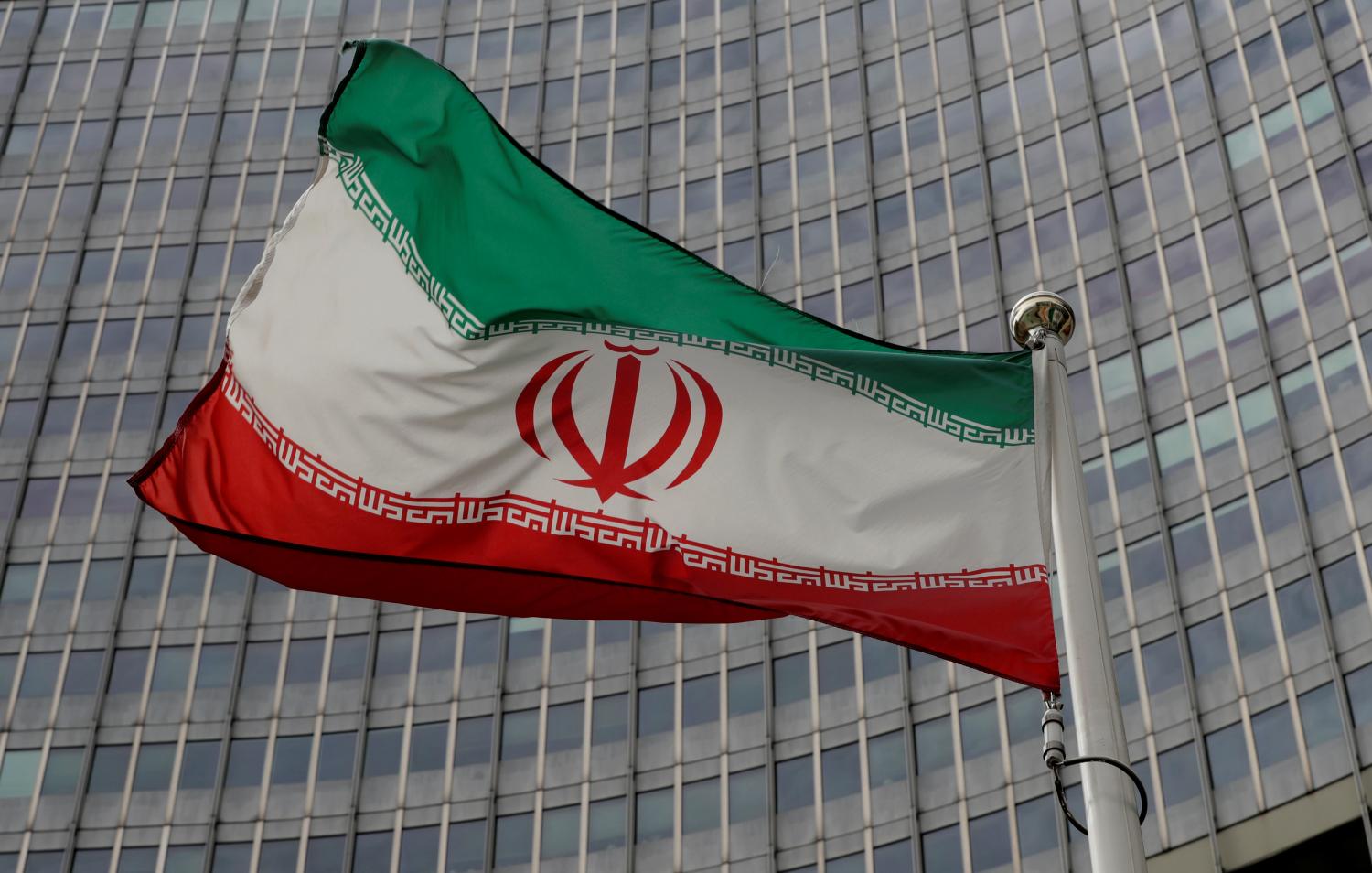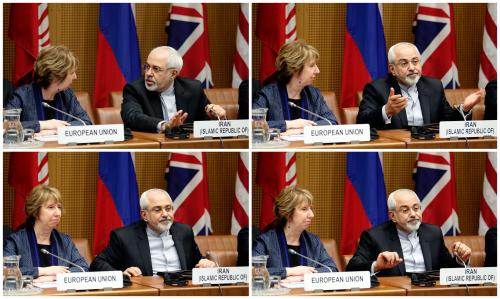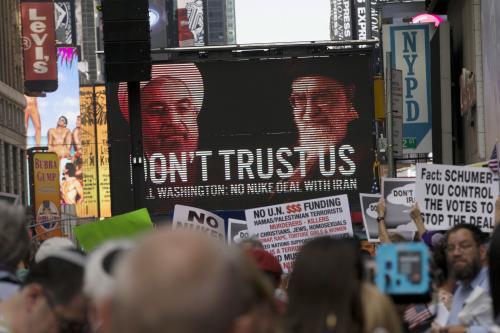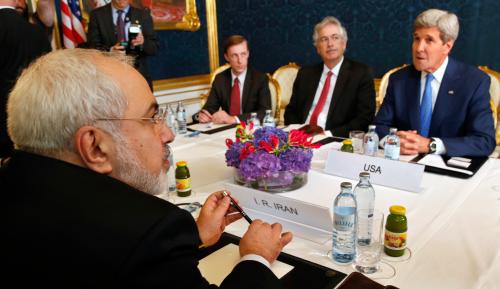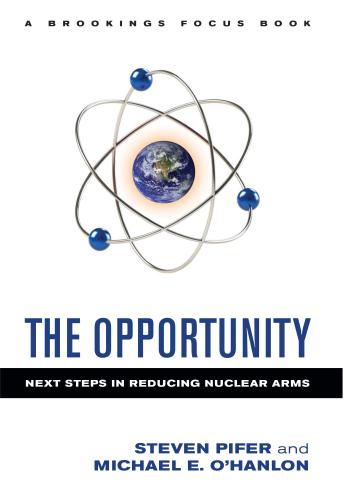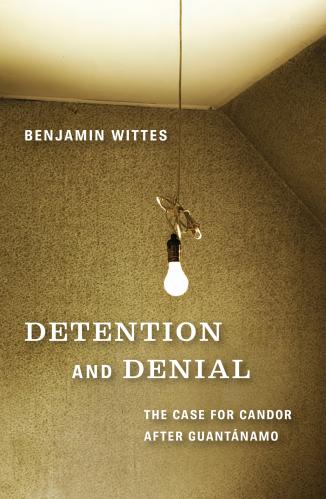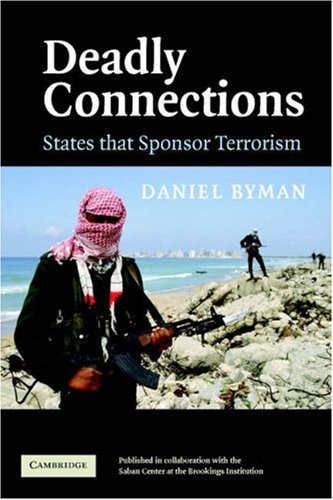Iran’s January 5, 2020 announcement that it no longer considers itself bound by the restrictions on its nuclear program contained in the Joint Comprehensive Plan of Action (JCPOA, aka the “nuclear deal”) raises the specter of the Islamic Republic racing to put in place the infrastructure needed to produce nuclear weapons quickly and the United States or Israel conducting military strikes to stop it. But while Tehran’s announcement makes such a worrisome scenario possible—and further hollows out the JCPOA and hastens its eventual demise—a nuclear crisis along these lines is highly unlikely, at least for now.
To make it less likely, the United States and other interested countries should seek to discourage Iran from rapidly rebuilding its nuclear infrastructure and thereby reducing the time it would need to begin producing nuclear weapons. In particular, they should explore with Iran an interim arrangement that would temporarily freeze or roll back advances in Iranian nuclear capacity in exchange for some U.S. sanctions relief measures. Such an interim arrangement could help forestall the deterioration of conditions for productive engagement on the nuclear issue and provide a bridge to the negotiation of a more formal agreement that would build on and revise the JCPOA and perhaps address other issues dividing Iran from the United States and other countries.
The last of five steps
Iran’s announcement was no surprise. Beginning in May 2019 and at two-month intervals since then, the Iranians have taken steps to reduce their commitments under the 2015 nuclear deal and rebuild their nuclear capability, particularly their enrichment program. They have justified these steps as a response to the Trump administration’s withdrawal from the JCPOA in May 2018, re-imposition of U.S. sanctions suspended under the JCPOA, and “maximum pressure campaign.” At each stage, they have offered to return to full implementation of their JCPOA commitments if the United States reversed its approach and provided the sanctions relief to which they believe they are entitled under the nuclear deal.
The incremental steps taken by Iran during 2019 to exceed its JCPOA commitments were relatively modest and apparently designed not to be unduly provocative. They included removing the ceilings on stocks of enriched uranium and heavy water, increasing slightly the level of enrichment to still below 5%, and dropping restrictions on research and development for advanced centrifuges. The step generally seen as most provocative was the decision to resume uranium enrichment at the underground Fordow facility because that was the previously secret site believed by Washington and others to be intended for the covert production of weapons-grade uranium. But that step was largely symbolic because the limited number of centrifuges that could be housed there would add only marginally to the much larger number that could eventually operate at Iran’s main enrichment facility at Natanz.
A critical goal of the JCPOA was to increase “breakout time”—the time it would take Iran to produce enough highly enriched uranium to fabricate a single nuclear weapon. By sharply reducing the number of operating centrifuges, allowing only the operation of inefficient first-generation centrifuges, drastically reducing the inventory of enriched uranium, cutting back the enrichment level from 20% to less than 5%, and tightly constraining research and development for more efficient centrifuges, the JCPOA increased breakout time from about two to three months to about 12 months. The steps Iran took in 2019 to reduce its commitments have allowed it to begin gradually reducing breakout time—so far, by a relatively small amount.
The January 5 announcement was the fifth in the series of announcements Iranian authorities have made in the last eight months to signal its incremental shedding of JCPOA constraints. A statement released by Iran’s cabinet indicated that Iran will no longer observe restrictions “in operational areas,” including the number of centrifuges, enrichment percentage, the volume of enriched material, and research and development. It said that, in the future, Iran’s nuclear program would be governed not by any restrictions but by the country’s “technical needs.” The announcement was advertised as “the final step” to reduce its JCPOA commitments.
While the cabinet’s statement was issued at virtually the same time that Iran’s leaders were pledging revenge against the United States for the targeted killing of Quds Force leader Qassem Soleimani and was therefore widely seen as part of Iran’s retaliation, the convergence of the timing of the JCPOA announcement and the retaliatory threat was largely coincidental. Well before the killing of Soleimani, Iran had been expected to reveal another tranche of nuclear measures on or around January 5. Iranian Foreign Ministry spokesman Abbas Mousavi stated early that day that decisions about “the fifth step” had already been taken before the killing but that “some changes will be made in an important meeting tonight” in light of “the current situation.” It is unclear whether, or to what extent, Iran’s fifth step went beyond what was originally planned.
Why Iran might ramp up its nuclear capacity quickly
In any event, Iran now feels free to build up its enrichment capacity—and thereby reduce its breakout time—as much as it pleases. But how will Tehran choose to proceed?
Presumably there is strong support in certain Iranian circles for a rapid buildup in enrichment capacity. It has long been Iran’s stated goal to have an “industrial-scale” enrichment program capable of producing enough low-enrich uranium fuel annually to power a 1000-megawatt nuclear power reactor (such as the Russian-supplied Bushehr reactor) for roughly a year. Such a program would require the equivalent of about 190,000 P1 first-generation centrifuges (compared to the roughly 5,000 P1s allowed under the JCPOA), although Iran would undoubtedly replace the P1s with a much smaller number of newer, more efficient centrifuges. While Iranian authorities claim that such an industrial-scale enrichment program would be devoted exclusively to producing nuclear energy for peaceful purposes, it would also provide the capability, if Iran decided to acquire nuclear weapons, to produce enough weapons-grade uranium for nuclear weapons in a matter of weeks.
Iranian proponents of producing nuclear weapons as soon as possible might therefore be expected to advocate a rapid ramping up of enrichment capacity. Support for a rapid buildup might also come from those who may not be interested in pursuing nuclear weapons any time soon but may wish to have the production infrastructure in place to provide the option to build nuclear weapons quickly should the need arise. Still additional support might come from those members of the Iranian nuclear establishment who wish to have a robust and genuinely civil Iranian nuclear energy program that is not dependent on foreign supplies of enriched fuel.
In the current environment—in which the prospect of open U.S.-Iran warfare remains despite efforts by both sides to de-escalate following Iranian missile strikes against two bases in Iraq that house U.S. military personnel, and when leaders of the Iranian regime regard the United States as an implacable enemy and mortal threat—the argument within Iran for moving expeditiously to ratchet up its nuclear capacities has probably been given a boost.
Also strengthening the case for a prompt buildup is the belief that, in the event of any future negotiations on the nuclear issue, Iran would need substantial leverage to achieve an acceptable deal and that a significant and growing Iranian nuclear capacity would provide that leverage and give Washington incentives to reach an agreement that would provide Iran the sanctions relief it desperately needs.
But strong reasons to go slow
Despite the freedom Iran has now given itself to expand its nuclear program, there are strong reasons why it may wish to proceed slowly and incrementally, including a desire not to alienate the Europeans or the Russians and Chinese.
Since May, when Iran began reducing its JCPOA commitments, France, Germany, and the United Kingdom (the E3)—the three European governments participating in the JCPOA—have warned Tehran that its actions were violations of the nuclear deal and could compel them to invoke the agreement’s “dispute resolution mechanism,” which could lead to the “snap-back” (i.e., re-imposition) of previous U.N. Security Council sanctions against Iran that were suspended under the JCPOA—a development that could add significantly to the economic hardships the Iranians are currently facing. The E3 have been reluctant until now even to begin the dispute resolution process because if it resulted in the re-imposition of Security Council sanctions, it would almost surely mean the total collapse of the JCPOA, which the Europeans have been determined to salvage.
In the wake of Iran’s January 5 announcement, however, E3 foreign ministers decided on January 14 to invoke the JCPOA’s dispute resolution mechanism, a process involving several diplomatic stages that could take nearly two months before a decision on triggering snap-back would need to be made. In their joint statement, the three ministers maintained that Iran’s actions left them no choice but to begin the process, but that they were acting “in the sincere hope of finding a way forward to resolve the impasse through constructive diplomatic dialogue, while preserving the [JCPOA].” The Europeans apparently plan to use the threat of triggering snap-back to induce Iran to halt or roll back its nuclear advances or perhaps even come back into JCPOA compliance. With the dispute resolution process now underway, the Iranians are on notice that if they now act aggressively to ramp up their nuclear program the Europeans may feel compelled to trigger snap-back.
The Iranians also know that heading rapidly toward an industrial-scale enrichment program could put Russian and Chinese support in jeopardy. In the period leading up to the JCPOA, Moscow and Beijing shared their American and European negotiating partners’ opposition to Iran acquiring nuclear weapons, and they joined the others in imposing powerful sanctions and pressing Iran to accept the tight restrictions contained in the JCPOA. But they strongly objected to the Trump administration’s withdrawal from the JCPOA and its maximum pressure campaign, and they have sought, despite U.S. sanctions, to maintain close political and economic ties with Tehran. If, however, Iran appears to be moving toward a threshold nuclear weapons capability, Russia and China could reevaluate their support for Iran’s position and their readiness to shield it from the pressures likely to follow.
The Iranians seem to have placed great value on the sympathy and support they received from the international community for their forbearance in remaining bound by the JCPOA for one year despite the U.S. withdrawal and re-imposition of sanctions. By proceeding in a carefully calibrated and incremental manner since May 2019 to reduce their commitments and by stressing their willingness to return to compliance if the United States provides JCPOA-mandated sanctions relief, they have largely managed to maintain that support. But Iran’s leaders must recognize that that could change, and that they, rather than the Americans, could be isolated internationally if aggressive efforts to build up nuclear capacity reignited international alarm about the prospect of an Iranian nuclear bomb.
Of course, it is not only concern about the snap-back of Security Council sanctions or the loss of Russian, Chinese, and broader international support that will affect decision-making in Tehran regarding the scale and pace of Iran’s efforts to build up its nuclear program. Perhaps more decisively, Iran’s leaders must also recognize that if they create the impression that they have decided to move quickly to acquire nuclear weapons or even the nuclear infrastructure that would allow them to break out and produce nuclear weapons in a very short period of time, they would significantly heighten the risk of a U.S. or Israeli preemptive military strike.
There may also be programmatic reasons why Iran may decide to proceed cautiously in advancing its nuclear capacity. When the JCPOA was concluded in 2015, Iranian nuclear planners figured they would have substantial time to prepare for the rebuilding of their nuclear infrastructure once key nuclear restrictions under the deal expired after 10 and 15 years. They presumably planned to use that time to do extensive testing and development of more advanced centrifuges than the rather primitive P1s that were the only machines the JCPOA allowed them to operate.
Now that they are no longer bound by JCPOA restrictions and no longer have to wait 10 and 15 years to rebuild their program, they could decide to re-install the thousands of P1s that were placed in storage under the agreement. This could significantly reduce breakout time and could be done relatively fast. But that is not what the Atomic Energy Organization of Iran was planning to do and it makes little technical or economic sense. Instead, they are likely to continue their current R&D programs for several centrifuge models before selecting the most promising option or options and proceeding to large-scale production, deployment, and operation. For some centrifuge designs, this process could take several more years. So if Iran is serious about proceeding only in accordance with the “technical needs” of its civil nuclear energy program (as stated in the cabinet’s January 5 announcement)—and is not trying to make rapid headway toward a threshold nuclear weapons capability—it will take its time and not proceed in a way that would generate international concerns that it is seeking to reduce its breakout time as quickly as possible.
No indications that Iran is in a hurry to expand nuclear capacity
Whatever the combination of reasons, Iran seems to have decided, at least for now, not to act provocatively in the nuclear area. Iranian officials have tried in a number of ways to cushion the blow from the January 5 announcement and forestall an adverse international reaction. They made clear that they have not withdrawn from the JCPOA, asserted that all five steps taken to reduce their commitments are reversible, and maintained that they will return to implementing their JCPOA commitments if U.S. sanctions are removed. In addition, they did not announce specific measures that could signal an intention to rapidly reduce breakout time, such as boosting the enrichment level to 20% or higher. And they indicated that the January 5 statement was the final step in announcing reductions of their JCPOA commitments, which some observers took as a positive sign because it could alleviate pressure on the Iranian government to continue coming up with additional measures in violation of the JCPOA every two months.
Most importantly, Iran did not announce any scaling back of its commitments with respect to International Atomic Energy Agency (IAEA) monitoring. The cabinet statement indicated that Iran will continue cooperating with the IAEA “as before.” In a tweet, Foreign Minister Javad Zarif stated that “full cooperation” with the IAEA will continue. Continued “provisional application” of the IAEA Additional Protocol, innovative and intrusive monitoring arrangements unique to the JCPOA, and unprecedented procedures for overriding possible Iranian objections to IAEA access to suspect sites will give the United States and the international community confidence that, even though Iran is no longer bound by the JCPOA’s restrictions on its nuclear program, any steps by Tehran to build up its nuclear capacity and reduce breakout time will be readily detected.
In coming weeks and months, thanks to IAEA access and reporting, we may learn more about the extent to which, and the pace at which, Iran will take advantage of the removal of JCPOA restrictions to boost its nuclear capacity, especially its uranium enrichment program. But at least so far, there are no signs that it will move as swiftly as possible toward a large-scale enrichment capability that would dramatically shorten its breakout time.
Discouraging a more aggressive buildup
Whether and how long Iran will proceed with moderation in advancing its nuclear program is hard to predict. An escalation of the current military confrontation between the United States and Iran—with direct attacks by each side’s military forces against the facilities, personnel, or broader interests of the other—could weaken the argument in Tehran for nuclear restraint. A further intensification of the U.S. maximum pressure campaign—which the Trump administration apparently has every intention of pursuing, as evidenced by its January 10 imposition of sanctions on Iran’s metals, construction, textiles, and other industrial sectors—could also strengthen the hand of Iranians calling for a more defiant pushback against U.S. efforts to bring the Islamic Republic to its knees.
It is clearly in the interest of the United States and of the international community in general to keep Iran as far away from the nuclear weapons threshold as possible and therefore to discourage a rapid increase in Iran’s nuclear infrastructure. Given the current poisonous state of U.S.-Iran relations Washington is hardly in an advantageous position to directly call for Iranian restraint, but it can urge others to do so.
The E3 can play an important role. Now that they have set the JCPOA’s dispute resolution process in motion, they have several weeks of diplomatic activity with Iran and other JCPOA members before having to decide whether to trigger the snap-back of previous U.N. Security Council sanctions against Iran. The E3 could use the time to urge Iran to observe certain voluntary restraints on the scale and pace of its nuclear program (e.g., to enrich at or below 5%, to increase centrifuge numbers at a gradual rate, to defer for a reasonable period the installation and operation of advanced centrifuges, to continue the conversion of the Arak reactor to minimize its production of plutonium, to implement all of the JCPOA’s monitoring and inspection arrangements). In exchange, the E3 could assure Iran that they will not trigger snap-back. The United States should call on its three European allies to pursue such an approach.
The United States should also consult with Russian and China on the scale and pace of the rebuilding of Iran’s nuclear infrastructure and encourage them to press Tehran not to act provocatively. Despite sharp differences with Washington on the JCPOA and its maximum pressure campaign, Moscow and Beijing have little interest in seeing Iran achieve an industrial-scale enrichment program that would greatly shorten its breakout time and therefore heighten regional instability and the risk of preemptive military strikes.
An interim nuclear arrangement with Iran
The most effective way for the United States to promote Iranian nuclear restraint would be to reach an agreement or understanding with Iran. But in current circumstances—with the Trump administration continuing to express confidence that its maximum pressure campaign can compel Iran to accept its demands and the Iranian regime asserting its determination to resist those demands and exact revenge for Soleimani’s killing (albeit through less escalatory means)—there is little prospect of a new U.S.-Iranian agreement that would revise and update the JCPOA as well as tackle other divisive issues, such as Iran’s ballistic missile program and support for its regional proxies.
In the present environment, probably the most that could be achieved would be an informal, interim arrangement that would temporarily freeze or roll back Iran’s steps that exceed its JCPOA commitments in exchange for some sanctions relief by the United States. French President Emmanuel Macron actively sought to broker such a de-escalatory measure last September at the U.N. General Assembly. Reportedly, he was close to bringing the two sides together on a deal that would require Iran to return to JCPOA compliance in return for a substantial rollback of U.S. sanctions and would also begin a negotiating process on a broader, more formal agreement. But the talks broke down over sequencing, with President Trump conditioning the deal on direct engagement with Iranian President Hassan Rouhani and Rouhani insisting that sanctions relief precede direct engagement with the American president.
The environment for diplomacy has significantly worsened since last September, and prospects for resurrecting the type of interim deal that was on the table then are uncertain at best. But arriving at the brink of war in the first week of 2020 has driven home the stakes involved in the intensifying conflict between the United States and Iran—stakes that would dramatically increase if Iran possessed nuclear weapons or had the capacity to produce them suddenly. So despite the many obstacles, a determined diplomatic effort should be made to find an interim solution on the nuclear issue that can at least temporarily constrain an Iranian nuclear buildup and prevent a further deterioration of the current situation.
A bridge to JCPOA 2.0
With the two principal protagonists no longer fulfilling their side of the basic bargain that made the 2015 nuclear deal possible—U.S. sanctions relief in exchange for strict limits on Iran’s nuclear program—the JCPOA has largely become an empty vessel. There is little, if any, chance of bringing its original members back into compliance with the terms of the 2015 deal.
In part, that’s because strong domestic constituencies in both Washington and Tehran regard the terms of that deal as seriously flawed. American critics of the JCPOA point to the limited duration of key nuclear restrictions, alleged shortcomings of its monitoring arrangements, and its failure to address Iran’s malevolent behavior outside the nuclear realm. For their part, Iranian critics have grown increasingly disillusioned with the scope and implementation of the deal’s sanctions relief measures because of their failure to deliver expected economic benefits, especially given the chilling effect on foreign traders and investors of U.S. sanctions not suspended by the JCPOA.
Moreover, U.S. and Iranian movements away from their JCPOA commitments have changed some facts on the ground that may be difficult to reverse by simply returning to compliance, such as Iranian progress in testing and developing new centrifuges and the alteration of Iran’s traditional oil trading relationships caused by the re-imposition of U.S. sanctions on Iranian crude oil exports.
Another important reason why returning to the 2015 deal is unlikely is that the expiration dates for some of its key provisions are approaching. For example, U.N. Security Council restrictions on conventional arms transfers to and from Iran will lapse within about a year; UNSC restrictions on transfers of ballistic missile technology will lapse three years later as will certain JCPOA constraints on centrifuge R&D; and major JCPOA limits on Iran’s enrichment program will begin to expire five years later.
Because it is not in the U.S. interest for such restrictions to end so soon (especially the JCPOA limits related to enrichment), it has long been the U.S. intention, supported by both JCPOA supporters and critics, to pursue negotiations that, among other objectives, would extend (or in the view of some critics, eliminate) those expiration dates. Rather than return to the original deal, which at the time of new negotiations may be seen as approaching obsolescence, a strong case can be made for proceeding directly to negotiations aimed at revising or, in the view of some opponents, replacing it.
The Trump administration has called for the negotiation of a new comprehensive agreement that would not only correct what it sees as the flaws of the JCPOA (e.g., by eliminating Iran’s enrichment program altogether) but would also require the Iranian regime to make fundamental changes in its foreign and domestic behavior (e.g., by ending support for its regional proxies)—a far-reaching set of demands that many observers regard as tantamount to a call for regime change, although the administration denies that regime change is its goal.
It should be clear by now that despite the tremendous economic pain inflicted on Iran by the maximum pressures campaign, Iran will continue to resist the Trump administration’s demands. It appears willing to negotiate on the nuclear issue—even to make adjustments in the original JCPOA—but only if it clearly stands to benefit economically. If the United States seeks in a new negotiation to achieve more than it obtained in the 2015 JCPOA, such as longer-lasting constraints on enrichment, it will need to give more to Iran—not only the sanctions relief provided in the original deal but perhaps also the elimination of some additional U.S. sanctions and policies that have impeded Iran’s ability to realize the benefits of JCPOA sanctions relief.
In current circumstances, such a “more for more” negotiation is very unlikely. And the conditions for pursuing productive negotiations could further deteriorate if Iran now proceeds rapidly to build up its nuclear capacities, if it creates uncertainty about its nuclear intentions and capabilities by reducing its cooperation with the IAEA, and especially if growing concerns about Iran achieving a minimal breakout time result in a heightened nuclear crisis.
So for now, despite the present unraveling of the JCPOA, an important goal should be to build a bridge from here to JCPOA 2.0 by maintaining as much as possible the conditions that could permit the eventual negotiation of a revised nuclear deal. Among other things, that will involve keeping JCPOA 1.0 on life support rather than allowing it to implode altogether because preserving some semblance of the deal will help ensure that its critical IAEA monitoring arrangements will continue to be implemented.
Keeping alive prospects for a future nuclear deal would also involve dissuading Iran from taking advantage of its freedom from JCPOA nuclear restrictions to build a large-scale enrichment capacity, which, once achieved, would be very difficult to roll back. As noted earlier, Iranian leaders now seem inclined for their own reasons—including the desire to avoid alienating supporters, provoking the snap-back of U.N. sanctions, or triggering military strikes against their nuclear facilities—to proceed gradually and non-provocatively in rebuilding their nuclear program. But Iranian restraint is hardly assured. International and domestic developments in coming months could lead Iranian leaders to adopt a much more aggressive approach.
The United States and other interested countries should therefore do what they can to reinforce what may be Iran’s inclination to proceed cautiously. In particular, they should pursue with Iran the idea of an interim nuclear arrangement that could temporarily freeze or roll back increases in Iran’s nuclear program in exchange for limited sanctions relief, perhaps enabling Iran to increase its oil exports to around 700,000 to 1 million barrels a day.
Iran’s January 5 announcement that it no longer considers itself bound by JCPOA restrictions on its nuclear program has unblocked the path to its pursuit of a nuclear weapons capability that the 2015 nuclear deal had effectively blocked for a period of at least 10 to 15 years. But the removal of JCPOA nuclear limits does not mean we are headed to a new nuclear crisis. If Iran, the United States, and other key countries are prepared to act with restraint and engage diplomatically on the nuclear issue, such a crisis can be avoided and the conditions can be preserved for pursuing a formal successor to the JCPOA when circumstances allow.

